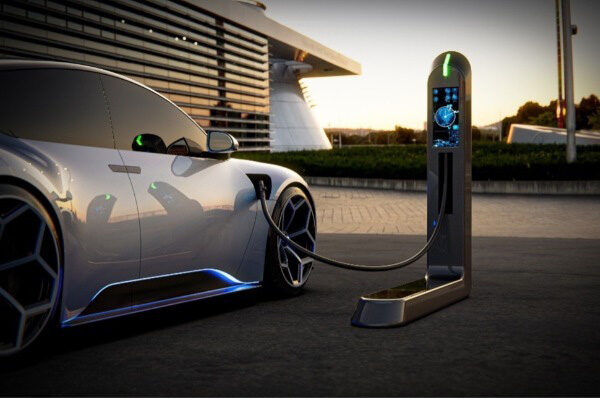In the Electric Vehicle Race, China is Coming First

By Alicia García Herrero, Emerging Markets Institute Academic Advisory Board
A fundamental part of the green transition
As the green transition takes off globally, the adoption of electric vehicles (EVs) has become a fundamental part of this strategy because cars are a significant source of carbon emissions (about 12 percent globally), although not as much as industrial production and supply chains, which are responsible for at least half of global emissions. One might wonder why so much attention is being paid to EVs in the green transition if other sectors are bigger emitters. The answer lies in the technical and commercial feasibility of EVs to reduce emissions.
Substituting traditional cars with EVs could help governments meet their pledges to cut emissions while buying time for sectors where technology is not yet sufficiently developed to reduce emissions at a reasonable cost. The EV sector also offers a great industrial opportunity, not only for the companies and countries that have traditionally produced cars, but also for newcomers. In fact, some of the most successful EV companies did not exist before—Tesla, for example—or have come from very different sectors, as is the case of Foxconn, one of the largest producers of electrical components.
The EU and China are leading the race
The European Union, the first economic giant to take serious measures to combat climate change, was also the first to encourage the demand for sustainable cars, and to a lesser extent to produce them—not fully electric vehicles, but rather hybrids, probably because of the interests of existing European automotive companies.
In China, on the other hand, the commitment has veered towards the fully electric car, both on the production and consumption sides. Subsidies have been concentrated on the producers, and less so on consumers, to encourage investment in research and development, which to date has been the most determining variable for the success of EV companies, with Tesla as the best example.
The reality is that the growth of the EV market has just begun. Sales of EVs are expected to grow from 4 percent of total car sales in 2020 to 70 percent by 2040, with China as the main market, followed by the EU, while the rest of Asia is predicted to become more relevant from 2025 onward. In fact, the adoption of EVs in Asia, outside of China, has been slow, representing only 3 percent of its total car sales. The main reason for the delay is the very limited government support, except in South Korea. But this also means massive growth opportunities, as Asia (minus China) accounts for 20 percent of the global traditional-car market.
China dominates the heart of electric cars
EV producers in China, which already account for 40 percent of the world market, are in an enviable position to benefit from the strong growth expected in the rest of the Asian market thanks to the signing of regional trade agreements. As if this were not enough, the production of the heart of EVs— batteries, which represent more than 40 percent of the total cost of an EV—is also concentrated in Asia, among South Korea, Japan, and China. Again, China leads in battery components after a long struggle with Japan for component supply dominance. Thus, China’s market share for battery components increased from 43 percent in 2014 to 60 percent in 2020, thanks to tight control on the supply of raw materials such as lithium, cobalt, and nickel, for which prices have grown exorbitantly in recent years.
Will EVs become the next bottleneck in global supply chains?
As EV manufacturers ramp up supply to meet growing demand, geopolitical risks are clearly emerging. The growing concern of many governments surrounding supply-chain security is only set to increase in the EV sector, given China’s dominance in battery components. With EVs being such a useful tool for governments to showcase their efforts to combat climate change, components for EV batteries could easily become another key geopolitical standoff and, possibly, a new bottleneck in the global supply chain, as semiconductors now are.
The difference is that mainland China is trying to reduce its lag in the semiconductor industry compared with the U.S. or even Taiwan in recent years, while it is clearly ahead in battery components. This becomes a much more obvious challenge when Chinese exports of EVs grow beyond the current rather meager share.
In short, in the race to dominate the EV sector, China is clearly ahead in demand— currently, from its own consumers and soon, from the rest of Asia— and also in supply, since China not only accounts for a good part of the world’s automobile production, but more importantly, controls battery components.
Faced with this reality, countries that have benefited from Europe’s leadership position in the automotive sector need to get their act together by starting production and ensuring a steady supply of EV components. As for Asia outside of China, it is time to think of stepping up production of EVs and batteries to avoid excessive reliance on Chinese exports.
About Alicia García Herrer

Alicia García Herrero, chief economist for Asia Pacific at Natixis, is a member of the Emerging Markets Institute Academic Advisory Board at the Cornell SC Johnson College of Business as well as a collaborator on the Emerging Market Multinationals Report. She also serves as a senior fellow at the Brussels-based European think-tank BRUEGEL, as a nonresident senior fellow at the East Asian Institute of the National University Singapore, and as an adjunct professor at the Hong Kong University of Science and Technology.
